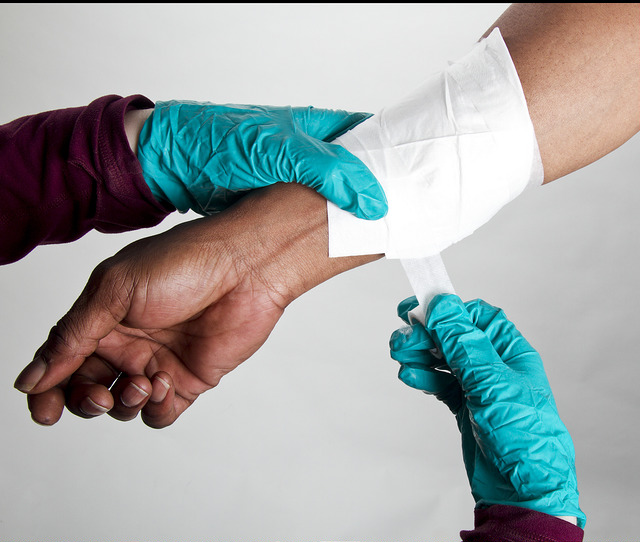By: Hazem Badr
Send to a friend
The details you provide on this page will not be used to send unsolicited email, and will not be sold to a 3rd party. See privacy policy.
[Cairo] Egyptian researchers have developed a bandage embedded with nanoparticles for the treatment of wounds using the anti-epilepsy drug Phenytoin, known for its capacity to treat skin injuries.
The bandage can heal wounds in a few days, after just one application to soft tissue. Wounds normally take several days to a few weeks to heal completely, and some may only heal after several months or up to two years.
Even though Phenytoin is known for its potential to accelerate wound healing, some of its properties limit its effectiveness. For example, a low percentage of the drug can be absorbed into the blood circulation. It also doesn’t cover the entire wounded area, which interferes with the efficiency of healing.
To overcome these challenges, a research team from Zewail City of Science and Technology in Egypt, led by Ibrahim M. El-Sherbiny, the director of the Center for Materials Science, embedded the drug into a bandage consisting of nanoparticles carried on nanofibers.
El-Sherbiny tells SciDev.Net: “This allowed a well-controlled release of phenytoin, distributing it effectively, which, boosts its efficiency.”
He clarifies that embedding the drug into nanoparticles, and then loading it into nanofibers, is one of the most important advantages of the bandage design, distinguishing it from other bandages.
“It acquired a greater ability [to heal] by increasing the surface area available to kill the bacteria, as well as by increasing porosity [of the skin], thus increasing its ability to absorb the drug,” El-Sherbiny adds.
“Although using nanotechnology in bandages is not new, this one stands out most importantly for using technology to overcome the negative points of phenytoin, and taking advantage of its beneficial use in the treatment of wounds.”
Ahmed Abdel Moneim, Egyptian-Japanese University
The team tested the bandage, which was developed in the laboratory, on samples of human fibrous tissue and on mice. The results showed that the wounds healed completely when using the bandage embedded with nanoparticles coated with a layer of lecithin as well.
El-Sherbiny stressed: “One bandage is enough to heal wounds within 10 days at the most.”
The main benefit of the bandage is that it improves the reconstruction of the cells that form the epithelial tissue that lines the skin, the internal organs and body cavities. This is a healing phase that usually begins two days after the wound appears, but may be prolonged in some cases to ten weeks.
The bandage also helps speed up the deposition of collagen, a protein that is the basic component in forming the skin’s connective tissue.
Another advantage, the researchers note, is that the bandage minimises formation of dead cells and scars.
They believe that the bandage may be a solution for treating wounds in areas of conflict that suffer from a shortage of medical supplies and personnel. Moreover, delays in wound healing cost health institutions a lot because of extended hospitalization periods.
The results of the study, published last May in the Journal of Applied Materials & Interfaces, also confirmed an improvement in the formation of granulation tissue — a fibrous connective tissue which grows from the base of the wound until it fills it, and replaces the blood clot that formed after the wound was received.
The team achieved yet more results, as El-Sherbiny says: “We are currently working on the development of a special bandage for diabetic patients, to solve the problem of difficult and slow healing of wounds.”The next step is to manufacture a prototype of the bandage, to start marketing commercially, according to El-Sherbiny.
Ahmed Abdel Moneim, head of the Department of Materials Engineering Science at the Egyptian-Japanese University, expressed admiration for the idea, saying: “Although using nanotechnology in bandages is not new, this one stands out most importantly for using technology to overcome the negative points of phenytoin, and taking advantage of its beneficial use in the treatment of wounds.”
He added that it may soon reach the market in the region, as health authorities always take less time to approve bandages than they do to approve pharmaceuticals.
This piece was produced by SciDev.Net’s Middle East & North Africa desk.














